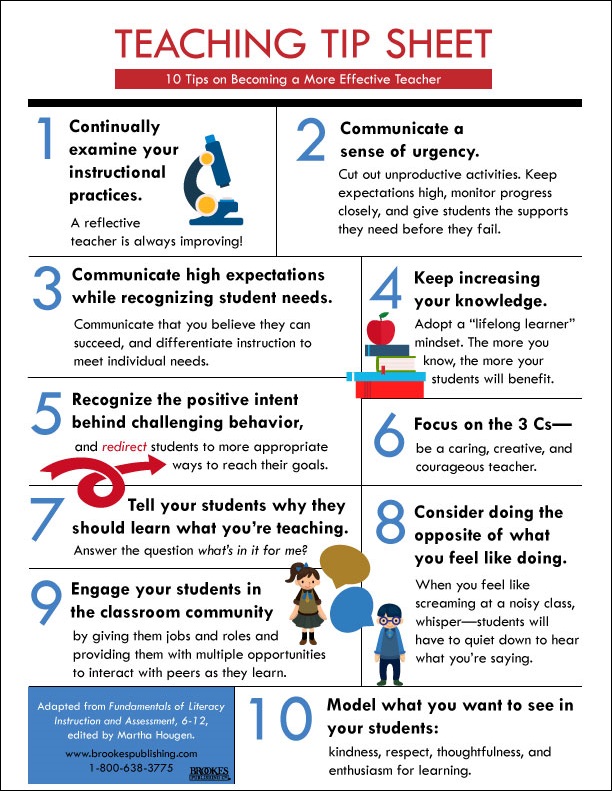Table of Contents
The art of teaching the English language has turned out to be a universal phenomenon, and all of a sudden, there is an influx of novices coming forward to learn. Be it a classroom in Japan where you will have a bunch of learners taught in a group a tutor who teaches a group of students in Brazil, or online lessons through Chinese learners, as an English teacher, your role will certainly be indispensable in such a scenario.
Upcoming Batches of TEFL Course :-
| Batch | Mode | Price | To Enrol |
|---|---|---|---|
| Starts Every Week | Live Virtual Classroom | 26500 | ENROLL NOW |
But how do you make sure your students are not only learning but enjoying it too? So, how do you go about ensuring that your teaching methods are appropriate and in a manner that will either keep or attract a person to a class? Well, it lies in adopting the best practices for teaching English as a foreign language. When one understands different strategies on how to go about teaching, then it means they can help their students achieve their potential and make their language-learning journey an enjoyable one.
But does teaching the English Language just involve knowing about the language?
Let me tell you a story.
We have a new student starting in your class today. His family has just relocated to your city from abroad. He will join your class and you will be teaching the English language to him. You have an entire class full of students who are in the same or similar situation. You will be the one providing him exposure to all these learners. And most likely, they speak little or no English.
But how can you teach someone who doesn’t understand you or whom you barely understand?
The first thing a teacher can do when teaching English as a foreign language is to clearly outline the aims or objectives. Each lesson must have a specific aim that must provide guidelines for teaching. This way students can learn better. For instance, Your lesson is about past tense verbs, your aim/ objective must be that by the end of the lesson, students must gain expertise in using past tense verbs in sentences. Having a clear objective or aim drives you towards your goal. Also, it gives students a sense of direction. They know what to expect and can measure their progress against the lesson’s goal. Additionally, having a clear aim saves time in planning your lesson because you are able to design your activities based on your objective.
How prepared you are to teach these students?
You did do a course in Teaching English as a Foreign Language (TEFL) and got training in some techniques to handle such a class. But there is no teacher training guaranteed to ensure success.
So what would you do?
All right, maybe we don’t have a magic wand, but we are committed to succeeding in teaching the English language to our students,
From where do you start?
If your fantastic in-class games can’t get the job done, you might not have to rethink your strategy.
So you keep thinking about how to keep your students’ morale high and determined to overcome their linguistic hurdles?
We have to adopt a strategy to apply to use the right teaching techniques, as it is evident from the circumstances in your class group.
Although students will be determined and consistent with their efforts, a textbook study isn’t the only way to learn, and also it alone is certainly not what is needed to achieve their goals. As teachers, we need to concentrate on an overall approach so we can help students in a class but also equip giving them tools to continue learning the language when they leave the classroom.
Let us discuss some best practices that we can adapt to teaching the English language to provide our students with the best learning experience.
Aim or Objective

Remember, these words mean the same!
What is the reason for this lesson or session?
You must have an object that you want to achieve from this session. And you should make the students aware of what is the target achievement before you start teaching. This gives them something to focus on and helps them concentrate on the class better.
You would have noticed that all good training courses will as standard practice usually outline the lesson’s aims at the beginning of the class. And in most cases, these would be outlined at the beginning of the class so the students can refer to them throughout the class. This serves the dual purpose of staying focused and knowing what is expected of the class.
Level
You can’t expect all students to be at the same level of English. They will also have different capabilities to follow the Teaching English language.
So your lessons need to be planned and executed as is appropriate for the level of the students in that class. You will need a dual approach here. The study materials should be flexible to cater for specific learning needs while your teaching style should be inclusive of all levels of students in the irrelevant of the fact that they are stronger in some a whether they are stronger in some areas or weaker in some.
Pace and Variety
The best-planned lessons are conducted at a pace suitable to the student’s group with a variety of tasks included in it.
This fact holds for any level of teaching.
Make sure you understand the pace of the class. Whatever the age and capability of the students, your teaching English language should match their absorption pace. Be prepared to change it for a different session, but don’t let it falter. Also, you will need to move around tasks and exercises. Your lesson plan should have flexibility. To add or remove things if you feel you need to.
Progress

As you continue teaching English as a Foreign Language, the learners should pick up skills to progress in their journey and continue to improve their language skills. Each lesson should make the students feel that they are one step closer to their aim. Take care to build in assessments in the learning plan to check the progress of your group.
Correction
Your students are learning a new language while you are teaching the English language. There will be errors that require to be corrected and relearned. However, remember you must ensure to avoid negative criticism that may embarrass students and they may choose to leave the class. You should propagate constructive feedback.
Correction by other students can be very helpful, and you should always encourage students to see their mistakes and correct them themselves. This is also a great way to learn from mistakes! Make it a point to appreciate students when they are correct and keep them motivated.
Encouragement

Be the inspiration of your students to learn, proper encouragement and appreciation will go a long way to keep the students interested. Gently but firmly push your students to perform to the best of their abilities.
Bring out the shy bunch, so they feel empowered and stir all students to take specific roles in different roles in group tasks, so everyone has an equal chance to contribute and develop.
Get to know the difficult studies and form a connection with them to draw them out and stimulate them tp progress. It may be the reason why they work better with one-on-one attention; they may lack social skills, or may even have medical issues.
Create an Engaging Learning Environment
Your classroom should be a comfortable and happy space. As a teacher, you will be responsible for the look and feel of the environment. This will include decisions involving the environment, the materials, and the social integration of your English language learners (ELLs) promoting language learning.
You will be responsible for planning the instruction and support of your students’ English language teaching. Learning a new Language often feels daunting and is a time-consuming process. Learners will get disheartened if they don’t get quick results or feel outside their comfort zone. However, continued motivation and correct levels of engagement while teaching the English language will drive the Learners to work hard persistently at learning the new language.
As a teacher, demonstrate that you have expectations of success for all your students. Student achievement is has a direct correlation with the teacher’s expectations of success. So, once you set the expectations and communicate them clearly to all their students, this will motivate them to perform at a high level.
Empower Students to Take Ownership
How does it feel to own your learning?
You have formed a deep relationship with the language, which has prompted you to Teach English as a foreign language. Pass on the deep love and connection while teaching the English language and help your students learn at an accelerated rate. Encourage them to find their path and work within the peer group. Let the class group realize that they can learn themselves and work with their peers. It will have a positive impact on both their effort and achievement with your support on owning their English language learning.
Different Student and Different Instruction
Each student is an individual and is different. So sometime individualized tutorials may be just what is called for. So, depending on the student, you may take up a smaller group for more effective instruction.
This format normally works well when conducting sessions online as students can take up a self-paced course and focus on specific areas of the curriculum where they need to pay more attention.
Know Your Learners

Whom are you teaching?
Do you know them as individuals?
As a teacher, you will need to establish a relationship with each of your learners. So, you will learn the basic background information about your students, for example, students’ families, languages, cultures, and educational backgrounds. This will be effective in engaging them in class and prepare and deliver your lessons more effectively.
Teachers collect information about their students’ linguistic and educational backgrounds to determine the correct placement for students. You will be able to use this information as a resource for learning as well.
Each student will bring in something unique to the class, be it their heritage or their life experiences. Your prior knowledge will help you determine what gifts and talents students bring to the group, what interests motivate them, and the opportunity to tailor your instructions for the group and successfully teach the English Language.
Must Check US Ranked No. 1 TEFL Certification Course Online
Design High-Quality Lessons
The challenge for ELLs is to learn a new language while adjusting to a new environment.
What is your most challenging task?
Well, I would say Teaching English as a Foreign Language!
As a teacher, you will need to plan meaningful, in-depth lessons to promote language learning and help the students develop their language skills. These will help students develop their learning strategies and critical thinking skills. These lessons evolve from the learning objectives. The content of the lessons will play an important part in the entire learning process.
So, there are techniques for making your lesson more appealing and easily understood to your group:

- Visual Aids: It is often easy to process information when there is a visual stimulus rather than an auditory stimulus. Your ELLs are not familiar with the language, so using visuals facilitates communication easier and lessons are easily understood.
- Group Work: While teaching the English language, you need the class to be engaged, with teacher-led class instruction while the class is divided into small groups yielding results. Students can practice the language with peers in a more intimate, personal, and lower risk instilling more confidence in the student.
- Work with the “Silent Period”: Learning a new language will be a challenging task. Adjusting to a new place and a new culture adds more burden. There may be a period where the ELL may not want or feel comfortable sharing or speaking. Allow them this period while you continue teaching the English language. Just be aware of making them feel part of the class, so they will willingly open up and integrate within the class.
- Sentence Frames: Sentence Frames are a great way to practice language skills, especially conversations. The idea is to work with partially finishes sentences, for example, ” I am not happy ………….. said because………”. This demonstrates to the student how to structure a sentence. An effective exercise that can be adapted for practicing speech, spelling grammar, etc.
- Learn about their heritage: As the students learn a new language, a good way to integrate the class is to learn their heritage. This is a good tool for you to understand the diversity of your class. And also it helps you to know about the various cultures. This is particularly useful to decipher unique cultural traits and language nuances, which may also affect learning a new language.
- Pre-Teaching: When you are going to teach any specific piece, especially reading, give the material to your students early. If you plan on showing them a video, send the link a day before. This will allow them to review the material before reading/watching in class. They would be more likely to understand it better, having had the chance to review it beforehand. Then, it will be a better-informed lesson in the actual class.
Adapt Lesson Delivery
When teaching English as a Foreign Language, as a teacher, you will continually assess as the ELLs —observing and reflecting on responses to make sure learning objectives are fulfilled. For teaching the English language to be effective, evaluation has to be carried out in real-time. If we wait till the end of the lesson, there is a chance we may end up overlooking any misses, like students misunderstanding a key concept or incorrectly learning a critical vocabulary.
This also assists in ascertaining how students are coping with the lessons. If they struggle or if you feel they are not challenged enough, then you can adapt their lessons to fit with their capability.
Engage And Collaborate Within a Community

As a teacher teaching English as a foreign language, you always want to provide the best for your students. Often, you are also abroad teaching the English language in an unknown country.
Who do you refer to when in need of assistance?
How do you keep improving?
One of the best answers to both these questions is when teachers collaborate with others within the industry to provide the best support for their learners. This also helps in their continued professional growth.
You can either meet up with local colleagues or get in touch with them via other means for lesson planning and delivery, share best practices and discuss instructional techniques for students of various proficiencies and seek solutions for any problems. These opportunities will put you in touch with teachers as well as content developers. And then you can compare notes about students’ language proficiency with content developers.
The Right Mind-Set: Classroom and Outside Practice
You have to provide a complete learning experience to your students, which would take into consideration classroom as well as outside learning fitting into every corner of your students’ lives. These students are learning a second language to fit into their new environment. So, they should be able to practice what they learn outside the classroom as well. This changes your role from just teaching English as a Foreign Language to an English speaking advisor.
Sure, your primary focus is in-class activities, but ideas that benefit students outside the classroom should also get equal attention.
Some things may seem straightforward, but remember, it may not be so to your class group. You have to teach these like life skills and remember not to make assumptions about your students’ basic knowledge of language capability.
Always remember, they are not professionals. YOU are!
Technology to Motivate and Interest Student
Motivation is a massive part of learning and adapting to something new.
Some of your students will come to class intrinsically motivated. Others will rely upon you to build the interest and provide motivation.
So how do you achieve that?
For adults securing a job and new career may be a persuasive factor. But then you have the younger generation, they, for instance, may enjoy the prospect of socializing with English speaking peers.
We have the technology today to meet everyone’s needs. While the young adults would be excited about changing their Facebook, Instagram, snap chat profiles to English, similarly, adults would have platforms like LinkedIn. There are varied sources of viewing options available to sample from as well. No matter the age group, technology will provide an option to go along with lessons.
Explicit Instructions and Ideas You Can Use at Home
We often assume that as we are teaching English Language and discussing learning strategies, students are on the same page. And we end up providing general guidelines. However, you must always remember, these ELLs may not fully comprehend these instructions or may be unable to read between the lines as we do. This is attributable to the fact that English is still new to them.
They do not have the training as you do for teaching the English language. They neither studied the nuances of the language nor are trained in the pedagogy. Thus, the best practice is to provide explicit instructions on how you want them to study and master the language.
For example, it is not enough to tell them to think in English. You also have to provide simple, clear specific ways for them to implement the idea. And show it to them with examples. Refer them to websites, podcasts, News channels to read and listen to various things. This way, they will make an effort to learn and create their own opinions in English.
Set up English Speaking Peer Groups

I learned through time that the best way to learn, practice it yourself, and learn from your mistakes. The best way to practice is by having a group of friends in similar situations to share with. Setting up peer groups fulfills all these objectives and is also a fun way to facilitate speaking. Your students can talk and discuss real-life situations.
You can also create group projects, so the groups spend maximum time with each other. But you have to be careful that the project has a purpose and each student derives maximum benefit. There should be an outcome of the project, and it should display what the students have learned. Your role in these would be to supervise, advise, and assist if required.
Build and Maintain a Classroom Library
Reading is an essential element in teaching English as a foreign language. Reading helps improve vocabulary, fluency, and teaches about grammar as well as the structure of the language. There is a lot of benefits you can derive from this one single exercise.
Unfortunately, not all students will have access to a library. So, a good idea would be to create one in class. This will allow you to assign books suitable for the students’ level and interests. This will also allow you to utilize any extra time left over after a lesson in a fruitful manner.
You can either create a physical library with hardcover books or various virtual libraries like open Library and Lit2GO to consider.
Students Speak

Teaching the English language, you are aware that student talking time has to be maximized during the class. This will ensure that your student can develop English language skills. The more time they have to speak in class, the more comfortable they become with the language, and as a result, they are likely to use more English outside. Thus, achieving the primary objective of Teaching English as a Foreign Language.
By maximizing student talking time, you are showing your students that they can take an active role in class and are learning to hold their end in an English language conversation. Once the idea instills in their minds, they will be English, and also it will boost their confidence.
The Impact of Globalization on Language Learning
Globalization has really influenced the demand for learning the English language globally. While it remains the language of international communication, business, and technology, the demand for proficient speakers of the language ballooned at an exponential rate. Therefore, there is unparalleled rise in the number of people
With the increase in mobility, due to globalization, many people are travelling for work and study; especially to countries where English is the first language. This contributes to the emergent need for language learning programs both in home countries and abroad that address learners of English as a non-native language. It follows that teachers of the English language are extremely valuable in guiding such learners through such global opportunities.
Influence of Technology: Technology accelerated further the spread of English by putting it at the fingertips of learners from different parts of the world. Online platforms, mobile apps, and virtual classrooms ensure that people from every place can get access to learning English without any barriers. These tools help teachers reach larger audience and also there is betterment in flexibility in learning.
The Role of Motivation in Language Learning
Motivation is necessary for anyone in general. More particularly, motivating students plays a crucial role in their career development. Similarly, to learn a language, that is completely foreign is pretty challenging; hence, motivation plays a significant role. ,As a teacher, one must clearly understand types of motivation, to help teachers create lessons that are best for their students.
Intrinsic motivation: The name itself says it all-intrinsic motivation is something that emerges from inside. For people who possess intrinsic motivation, learning English becomes fun and easy; as such, it is their desire to learn.Teachers may evoke intrinsic motivation when they connect lessons with students’ interests and make them relevant.
Extrinsic Motivation: By contrast, extrinsic motivation may be based on grades, rewards, or a need to pass an exam. While students who are extrinsically motivated may have short-term success, long-term language learning may not be achieved. While at times extrinsic motivators can be used by teachers, they must also facilitate an environment through which the learners find their search for meaning and value in learning the language themselves.
The Role of the Goal: Motivation will be maintained if the goals are appropriate and within reach. Teachers can thus help students set certain measurable and realistic short-term and long-term goals. Revising and updating these set goals on a regular basis will, in turn, afford students opportunities to keep their focus on their goals and maintain motivation along their language-learning journey.
Beyond Best Practices: Inspiring Your Teaching Journey
Best practices are of real importance, but teaching a foreign language is the most creative and passionate process dedicated to the success of students. Of course, every student is different; what works with one may well not work with another. Be flexible, patient, and open to trying new approaches. A love of the subject can be contagious to your students and help change their lives. Keep teaching, yet never stop learning or growing. Search out new resources, share with other educators, and always strive to improve on better ways of teaching. This means that while you are adding value to the students’ learning, you too are helping yourselves in terms of professional development.
Conclusion
Although teaching English as a foreign language is extremely challenging, it is also rewarding. Implementing best practices provides an ideal setting for an effective learning. you can build an ideal setting for effective learning. From the establishment of clear objectives to the application of technology, each strategy plays a significant role in attempting to bring about student success. Remember that as a teacher, your job does not end with teaching, it involves inspiring and motivating students, which will will help students embark on a path of success. As a result, there will be a world of difference in the lives of students. Consequently, students will excel in their careers.
Last Words….
You are trained for teaching the English language, an expert in your field, and pedagogy. I am sure you already use some of these while teaching English as a foreign language be at home or abroad.
There may be a few that are unfamiliar to you, give them a chance, and you may be in for a pleasant surprise.
We teachers teaching the English language have to stick together and look after each other.
Happy Teaching!
Recommended Read:
– What is TEFL Certification
– Top 10 TEFL Certification Program in 2021
– Top 15 Free TEFL Certification Courses in 2021
– Top 50 Best TEFL Certification Courses
– TEFL Vs. TESOL
Also Check this Video
FAQS
Q1. Define ‘Best Practices for teaching English as a Foreign Language?
Ans. Teaching English as a Foreign Language is quickly emerging as a popular career choice. English is the most commonly studied foreign language. You did do a course in Teaching English as a Foreign Language and are trained in some techniques to handle such a class. But there is no teacher training guaranteed to ensure success. We have to adopt a strategy to apply to use the right teaching techniques. These techniques have been applied in various TEFL institutes and by many teachers to achieve the best results. Thus, they are the best methods used to teach a TEFL class. They are called ‘Best Practices for teaching English as foreign language.’
Q2. How are the best practices useful in teaching English language?
Ans. Although students will be determined and consistent with their efforts, a textbook study isn’t the only way to learn, and also it alone is certainly not what is needed to achieve their goals. As teachers, you need to concentrate on an overall approach so you can help students in a class, but also equip giving them with tools to continue learning the language when they leave the classroom. These time tested methods can be applied to ensure that students achieve the learning objectives and become proficient in the language.
Q3. How can these best practices be applied for different curriculums?
Ans. The best practices that are discussed are techniques and teaching aids. They are flexible and can be adapted to fit any kind of curriculum that is being taught. They focus on methods the teacher can use to improve the student experience and equip them with better knowledge of the language. The practices are not associated with any specific curriculum type. And can be changed to suit any class type and any level of English teaching.
Q4. Are these the only practices that can be used for a better student experience?
Ans. There are many methods that have been successfully applied to teach English as a foreign language. We have only looked at a handful of these, which I thought were the best to be used in to ensure students effectively learn English. The methods are very simple to apply while teaching English language. However, there are numerous other methods that can be used to teach TEFL.
Q5. How do these best practices deliver a better student experience?
Ans. The best practices are so called because they have been put to test many a times and have proved to be useful when applied. These methods are aimed at making the teaching more effective and focused. These keep the student in mind and offer available solutions so that each student is able to complete their learning objectives.
Q6. How important is it to set clear objectives when teaching a Foreign Language?
Ans. Setting clear objectives allows the teacher and the students to have direction in terms of what is aimed at achieved within the lesson and allows each to gauge progress.
Q7. How do I adapt my lessons to different levels in my classroom?
Ans. Observe students’ capabilities and adjust teaching methodology and teaching aids to the levels of your students in order to keep their interest and challenge neither too low nor too high.
Q8.Why is it important to vary the pace and activities in an English lesson?
Ans. Changing pace and activities keeps students involved with their learning styles; this makes the lesson more effective and enjoyable.
Q9.How can technology be a tool used to improve the learning of the English language?
Ans. Technology offers a range of interactive tools and videos that reinforce learning in a manner targeted at student learning styles.
Q10. What is Encouragement a crucial practice in teaching of English as a foreign language?
Ans. Instilling confidence in a student is an important for any teacher. And, one best way to achieve this is by encouraging students. Encouragement motivates a student; therefore, he can be more participative.
Recommended Programs
120-hours TEFL / TESOL
Online Certification Course
Ranked No. 1 Course | 100% interview guaranteed | Live Online Instructor-led TEFL Training & Certification | AAEFL Certified TEFL Course | Qualify for 12,000+ jobs from 6+ countries | With over 100,000 English teaching positions opening every year, immerse into the market of 2 Billion English learners today.
TEFL Certification Online
Course in USA
Ranked No. 1 TEFL Certification Course in USA | 100% Interview Guaranteed | Online Certification course in USA | instructor-led training and certification program of TEFL | Qualify for 12000+ jobs from 6+ countries.
Post Graduate Program
in TEFL
Ranked No. 1 Course | 100% interview guaranteed | Live Online Instructor-led Post Graduate TEFL Training & Certification | AAEFL Certified Post Graduate Program in TEFL | Qualify for 12,000+ jobs from 6+ countries | With over 100,000 English teaching positions opening every year, immerse into the market of 2 Billion English learners today.
Explore Popular Category

